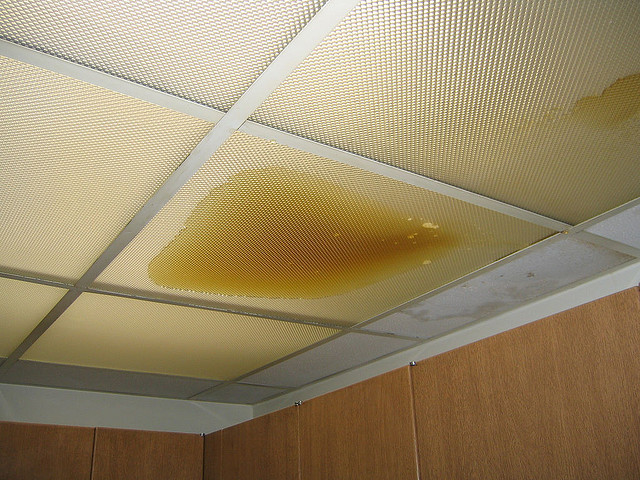We have uncovered the article pertaining to Detecting hidden plumbing leaks down the page on the net and felt it made good sense to talk about it with you on this page.

Early detection of leaking water lines can alleviate a potential calamity. Some tiny water leakages might not be visible.
1. Examine the Water Meter
Every residence has a water meter. Inspecting it is a surefire manner in which assists you find leaks. For beginners, turn off all the water resources. Make sure no one will certainly flush, make use of the tap, shower, run the washing equipment or dish washer. From there, most likely to the meter and watch if it will transform. Given that no person is utilizing it, there need to be no movements. That indicates a fast-moving leak if it moves. Also, if you spot no changes, wait a hr or more and also inspect back again. This suggests you might have a slow-moving leakage that could also be below ground.
2. Check Water Usage
If you spot sudden changes, regardless of your intake being the same, it implies that you have leakages in your plumbing system. A sudden spike in your expense suggests a fast-moving leakage.
A stable rise every month, even with the exact same routines, shows you have a sluggish leak that's likewise slowly rising. Call a plumber to thoroughly check your property, especially if you feel a cozy location on your floor with piping below.
3. Do a Food Coloring Test
When it comes to water consumption, 30% comes from toilets. If the color somehow infiltrates your bowl during that time without flushing, there's a leakage between the container and dish.
4. Asses Outside Lines
Don't fail to remember to inspect your outside water lines as well. Examination faucets by affixing a yard hose pipe. Ought to water leak out of the connection, you have a loose rubber gasket. Replace this and also make sure all connections are tight. If you've obtained an automatic sprinkler, it will assist get it professionally took a look at and also maintained each year. One tiny leak can waste tons of water and spike your water bill.
5. Examine and also Examine the Scenario
Home owners must make it a behavior to inspect under the sink counters as well as even inside closets for any kind of bad odor or mold and mildew growth. These 2 warnings suggest a leakage so timely attention is called for. Doing routine inspections, also bi-annually, can save you from a significant problem.
Much more importantly, if you recognize your house is currently old, keep a watchful eye on your heaters, pipes, pipelines etc. Look for stainings and weakening as many home appliances and also pipes have a life span. They will additionally normally wear away as a result of tear and also wear. If you believe dripping water lines in your plumbing system, don't wait for it to escalate. Call an expert plumber right now so you do not wind up with an awful mess in your house.
Early detection of leaking water lines can mitigate a potential calamity. Some tiny water leaks may not be noticeable. Inspecting it is a proven method that assists you discover leakages. One tiny leakage can throw away lots of water as well as increase your water expense.
If you presume dripping water lines in your plumbing system, do not wait for it to rise.
WARNING SIGNS OF WATER LEAKAGE BEHIND THE WALL
PERSISTENT MUSTY ODORS
As water slowly drips from a leaky pipe inside the wall, flooring and sheetrock stay damp and develop an odor similar to wet cardboard. It generates a musty smell that can help you find hidden leaks.
MOLD IN UNUSUAL AREAS
Mold usually grows in wet areas like kitchens, baths and laundry rooms. If you spot the stuff on walls or baseboards in other rooms of the house, it’s a good indicator of undetected water leaks.
STAINS THAT GROW
When mold thrives around a leaky pipe, it sometimes takes hold on the inside surface of the affected wall. A growing stain on otherwise clean sheetrock is often your sign of a hidden plumbing problem.
PEELING OR BUBBLING WALLPAPER / PAINT
This clue is easy to miss in rooms that don’t get much use. When you see wallpaper separating along seams or paint bubbling or flaking off the wall, blame sheetrock that stays wet because of an undetected leak.
BUCKLED CEILINGS AND STAINED FLOORS
If ceilings or floors in bathrooms, kitchens or laundry areas develop structural problems, don’t rule out constant damp inside the walls. Wet sheetrock can affect adjacent framing, flooring and ceilings.
https://www.servicemasterbyzaba.com/blog/how-to-detect-water-leakage-in-walls/

We hope you liked our piece on Locating water leaks. Thanks a lot for spending some time to browse our piece of content. Are you aware of another individual who is in the market for the niche? Feel free to share it. I value reading our article about Top leak detection hacks.